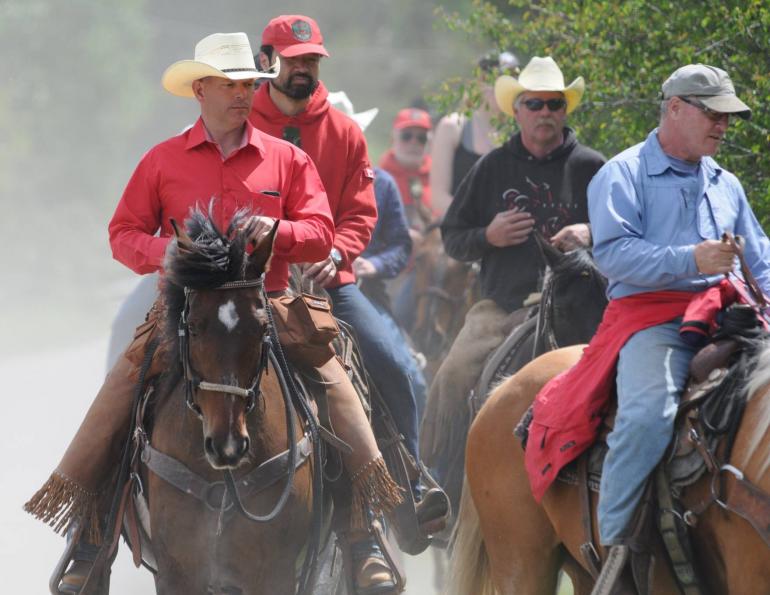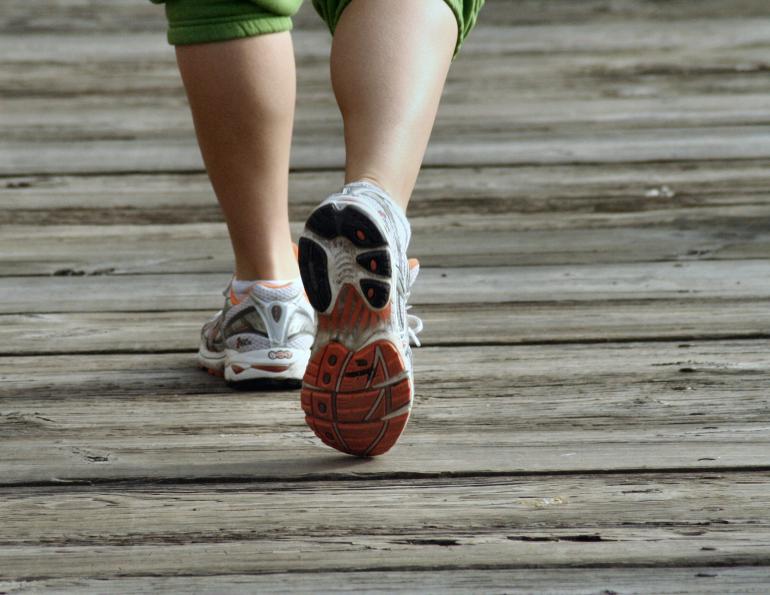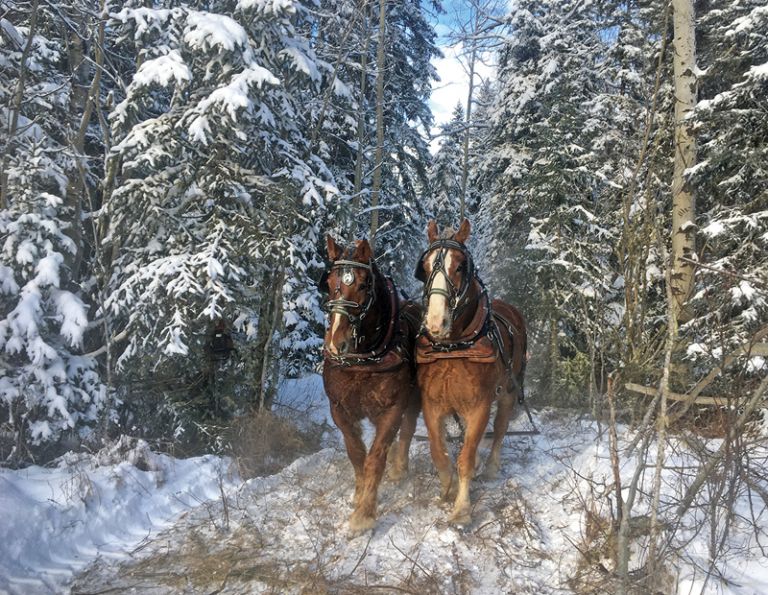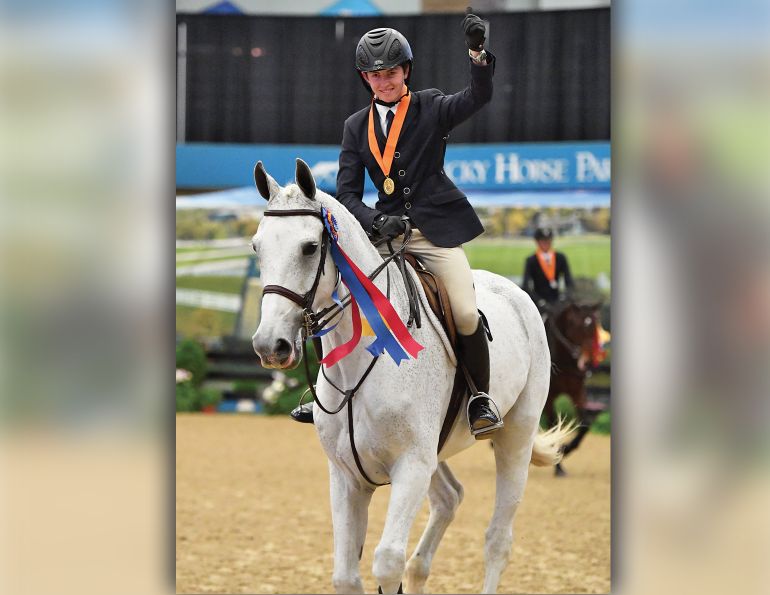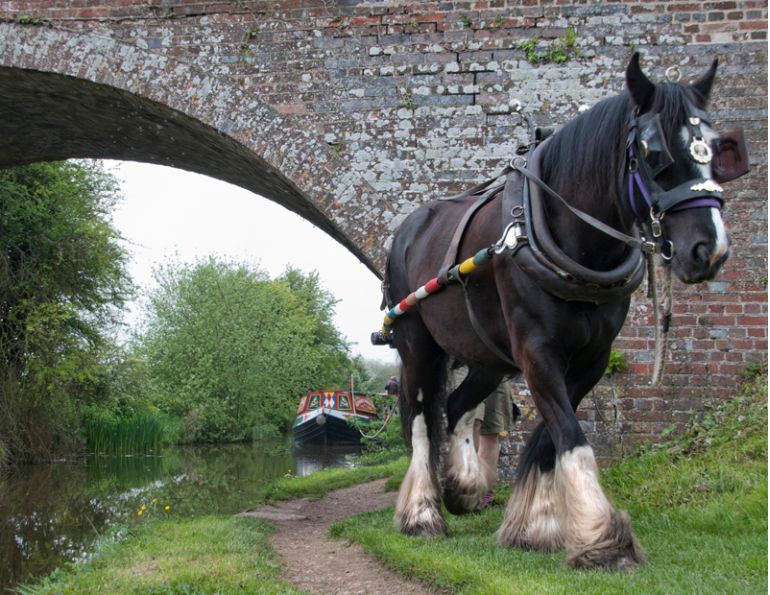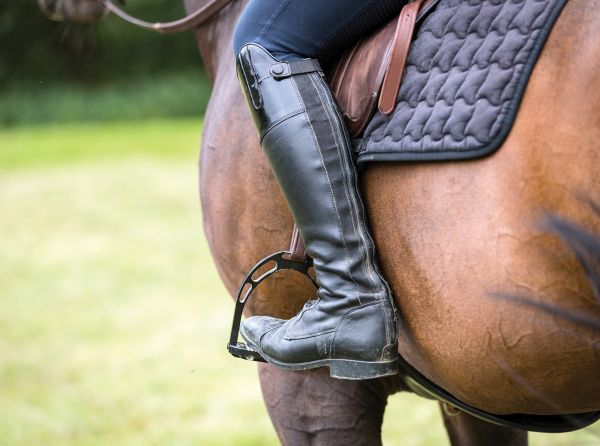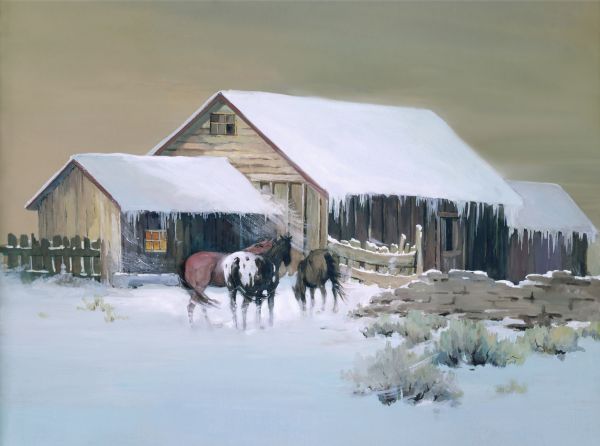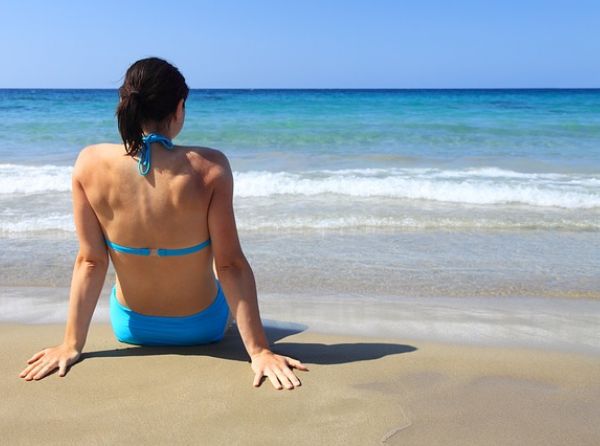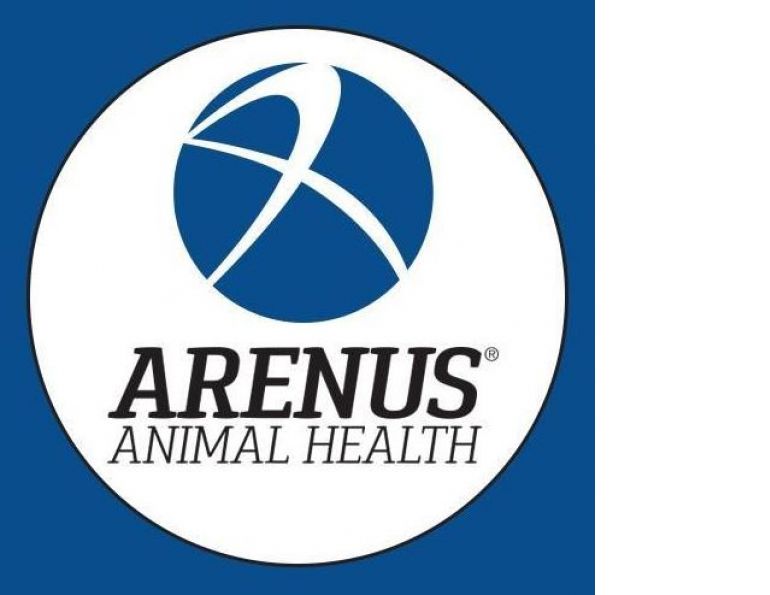Lighting candles, changing lives, and bringing hope to Canadian Forces veterans
By Margaret Evans
Canadian Armed Forces veteran Paul Nichols who, with his wife Terry, owns Pen-y-Bryn Farm Equine Facility in Quesnel, BC, had no idea that a chance encounter with a cashier in a gift shop several years ago would change his life.
Thousands of kilometres away, Sylvain Nadon, who lives in Victoriaville, Quebec, had no idea that a chance encounter with a man on a horse would save his life.
A few years ago Paul was away on a business trip to Vancouver, and he visited a little store on Granville Island to buy a necklace for Terry. At the counter, the lady serving him noticed a Regimental crest on his jacket. Paul, a veteran of the Princess Patricia’s Canadian Light Infantry, had served in the former Yugoslavia in 1993. In a UN peacekeeping mission, Canadian soldiers had gone to the aid of the people in Sarajevo, rescuing those hiding from gunfire and helping them to safety. One of those rescued was the lady now behind the counter wrapping Paul’s purchase.
Full of emotion, she told him her story. She had survived the almost four-year Siege of Sarajevo, the capital of Bosnia and Herzegovina in the former Yugoslavia, where more than 10,000 people were killed. Along with some others, she had lived for two years in a dark, cold underground parking lot. Every time she crept out looking for food and water, she faced sniper and machine gunfire. They were shelled almost every night. It was the Canadian troops who had finally rescued them.
When Paul told her his background with PPCLI, she burst into tears and hugged him, still grateful for the service of the Canadian soldiers. Paul was profoundly moved, as were the people lined up behind him. They all had tears in their eyes.
That haunting moment lingered and Paul realized the powerful depths of a heartfelt story. At home he shared the incident with Terry.
“Paul was on tour in Yugoslavia and he said it was a very busy tour,” said Terry. “There was a lot going on. There was no peace to keep. It was pretty disastrous. He wasn’t injured but he was definitely affected and came back a different person. He was in his twenties. We were married but had no children then.”
The incident continued to hang heavily on him. He had been deeply affected by the horrors and the suffering he had seen and he was still fighting demons. He had dealt with his fears, his depression, his hypervigilance and anxieties through long rides on his beloved horse Zoe, a 19-year-old 15.3 hand bay Trakhner/Appendix Quarter Horse, also a registered Sport horse.
Horses had become central to their lives in Quesnel where Terry was a therapeutic riding instructor. She, too, knew the almost mystical connection between horse and human, and the emotional mirrors a horse reflects to reach the heart and soul of people.
But both of them knew that thousands of soldiers who had returned from tours in combat zones experienced for years the torment of nightmares, demons, and panic attacks, the real life expression of post-traumatic stress disorder. Could connecting veterans with horses help them tell their stories and find a pathway to heal?
From the incident was born a vision to invite veterans and those in military service to ride across Canada, visit communities, share stories, and heighten awareness of the contributions military people have made and the special needs they face as they transition to civilian life.
In 2014 they launched Communities for Veterans Foundation and spent almost a year planning The Ride Across Canada – the route, the horses including suitable horses to lease along the way, the stop-overs, staging grounds, feed, event sponsorships, vehicles, helpers, publicity, and the veterans themselves who would apply to ride with them, provide their stories, and receive riding lessons from Terry before riding alongside Paul.
“We were quite strict with what the ride would look like,” says Terry. “[The riding group would consist of] my husband Paul and a maximum of three veterans who had gone through a lesson and been approved to join the ride. We would have events so when we rode into a community we would have a gathering at a cenotaph, a beach, a park or a community place. At that point there would be an invitation for veterans and community members to join us to talk and share thoughts. We wanted to hear what their experiences have been and what they want the Canadian public to know about the military and the transition back to civilian life. We wanted it to be more about communities and support.”
Their number one choice for routes was to keep to as many trails as possible. The second choice was a road with wide shoulders and a pilot car. In cities, they would have a police escort, motorcycle veteran club escorts, or mounted escorts. On city streets, they would keep the days short for the safety and welfare of the horses, the riders, and the public.
The horses were put on a special diet approved by their veterinarian and they had regular farrier visits. The local people who provided overnight accommodation would recommend farriers and organize a vet check.
On April 13, 2015, the Ride started out at the Legislature Building in Victoria, BC, with a seven-person crew. Based on a 40-kilometre day, they expected to arrive in St. John’s, Newfoundland, in early November. But they were unprepared for how overwhelmingly valuable the exposure to horses would be for many veterans.

The Communities for Veterans Ride Across Canada left the Legislature in Victoria, BC, on April 13, 2015. Photo courtesy of Communities for Veterans Foundation.
When they set out they had 160 registered riders. The plan was for soldiers and veterans to sign up to ride for a few hours or a full day. While Terry would provide some riding instruction prior to the veterans getting mounted, one of the challenges was to match each rider with the most suitable horse.
“Sometimes a really great horse isn’t the best horse for the rider so we [were] trying to match the best horse for each rider,” says Terry. “We needed athletic horses with stamina and in good physical strong condition. But we needed horses with a gentle mind, good ground manners.”
Terry and Paul both knew that the event would be exciting for the owners of loaned horses. The animals would become celebrities along with their riders. But behind the fun was some serious, ongoing organization and coordination. Their daughter, Kirsten, would take care of the horses and the core group would travel together across Canada in RVs equipped with portable offices. Terry focused heavily on the veterans who had applied to ride, and helped not only with basic riding skills but with their mental preparation.
“In order for people to be able to ride our horses we needed them to have an awareness of what they [the riders] give off,” says Terry. “For example, if they were carrying a lot of tension, if they were controlling, if their emotions were impacting them in their lessons with the horses, then that had to get better in order for me to give them permission to ride with Paul. Some riders would only be on for ten minutes and would ride into their local region. But in the process of them learning how to reduce tension, how to breathe, how to focus on the present moment, how to trust, and all the things that they needed to do for the horses’ wellbeing, we found that as soon as they dropped the guard they had been carrying for decades, they became more emotionally vulnerable sharing stories. It created something very special and some didn’t even realize they were carrying all that tension. They were quick to react to the horses and I could bring to them those parallels [as to] how they react with the horses and how they react in their family life or civilian life. The horses created this incredible awareness for the veterans who joined us. We were told that we changed their lives or their perception of who they were in those riding lessons and in that time with Paul on the road.”
In total, 363 veterans rode with Paul and hundreds more took part in support activities. The Ride was 11,000 kilometres of which Paul rode 7,000 kilometres on Zoe. Terry said that her horse, Skip, a Palomino gelding with a background in therapeutic riding, had 200 beginner riders on him going across Canada. Seventeen horses made up the remuda of which a maximum of four were ridden on the road at any one time. Given the winding route chosen in order to visit the hundreds of communities that invited them and some 400 planned events, the horses were occasionally trailered to keep on track with their schedule.
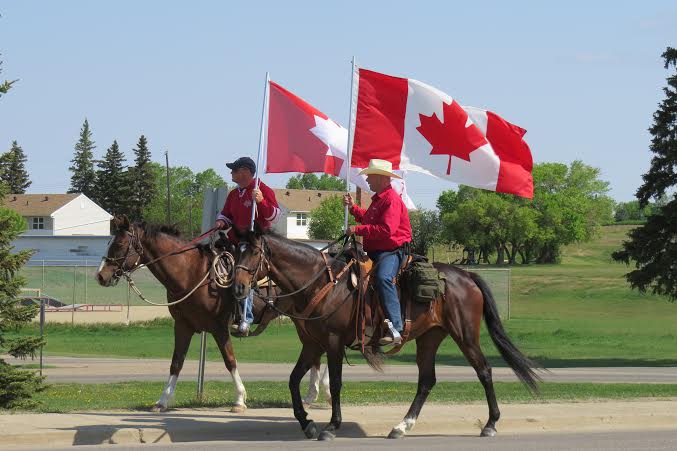
Riding through Wainright, Alberta, with national pride on display. Photo: Lindsay Chung, Communities for Veterans Foundation
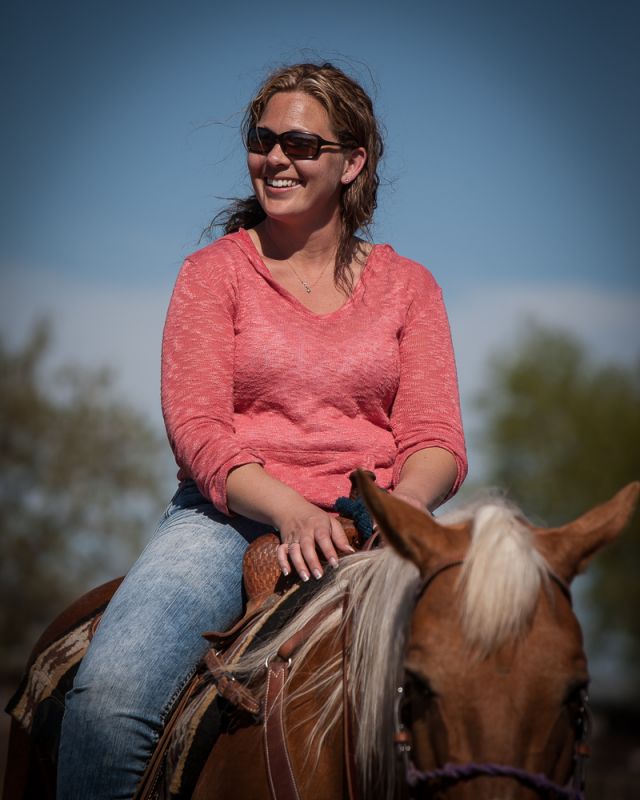
Cpl. Kelly James rides Skip during a lesson at Amberlea Meadows in Leduc County, Alberta. James has spent her entire career at 1 Field Ambulance, working as a dismounted medic, deploying with MTTF 01-11, Ops & Training, and at the base clinic. She joined the Canadian Armed Forces in 2007 and was posted to Edmonton in 2009. Photo: Lindsay Chung, Communities for Veterans Foundation
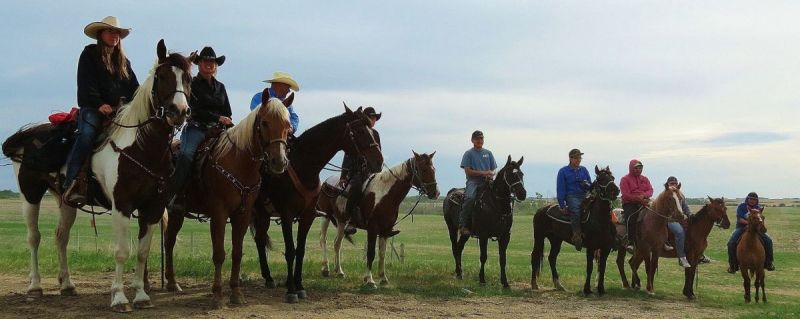
In June, Cree riders rode out to meet the riders and escort them into Little Pine First Nation in Saskatchewan. Photo courtesy of Communities for Veterans Foundation

Arriving at CFB Shilo and Canada’s National Artillery Museum in Manitoba. Photo courtesy of Communities for Veterans Foundation

Sgt. William Webb of Shilo, MB, a member of 1RCHA (1st Regiment, Royal Canadian Horse Artillery) who has served two tours in Afghanistan, bonds with Cowboy before his ride near Brandon, MB.

Paul Nichols meets a soldier as he and Flicka ride through CFB Shilo in Manitoba on July 6, 2015. Photo: Lindsay Chung, Communities for Veterans Foundation
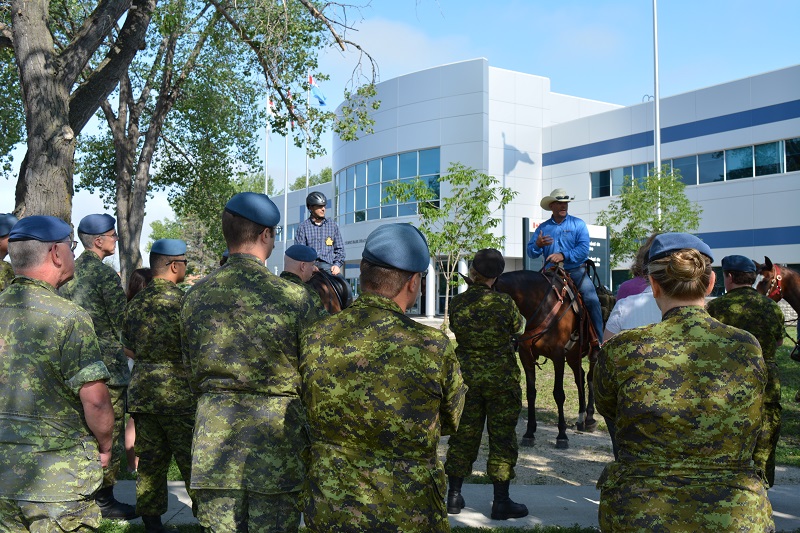
Communities for Veterans Foundation co-founder Paul Nichols speaks to a crowd in front of the Wing Headquarters at 17 Wing Winnipeg, as Wing Commander Col. Joel Roy looks on. Roy rode with Nichols when the Ride Across Canada toured the base on July 15, 2015. Photo: Lindsay Chung, Communities for Veterans Foundation
By the end of the ride, they finished with 12 crew members but more than 1,000 people had come out along the way to contribute, help, or organize essential services – overnight stays, donated feed, farrier work, veterinary services, repairs, cleaning, food supplies, publicity, events at legion halls, etc. And every step of the way required safety measures for each veteran rider and horse.

Paul Nichols and Skip arrive at the Afghanistan Repatriation Memorial near CFB Trenton, ON, honouring the men and women who sacrificed their lives in the conflict in Afghanistan. Photo courtesy of Communities for Veterans Foundation
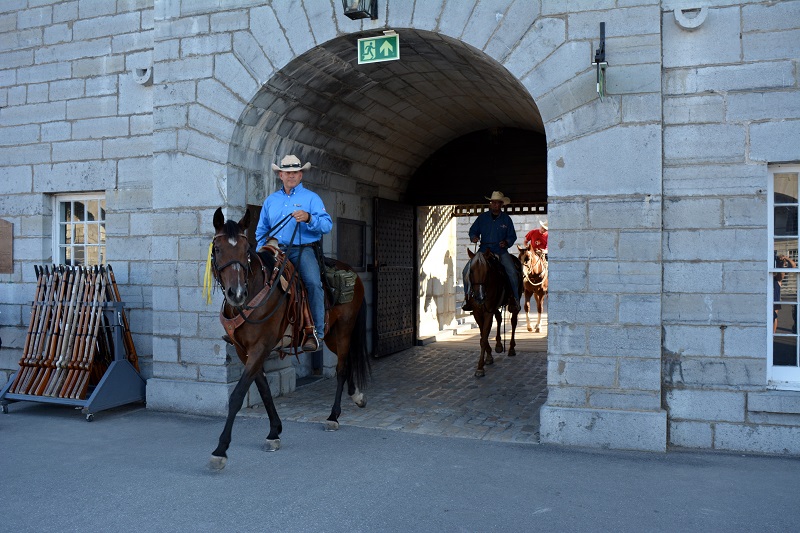
Paul Nichols and Zoe enter the parade square at Fort Henry in Kingston, Ontario on August 22, 2015, followed by Lawrence Christensen of Trenton, Ontario on Skip. Photo: Lindsay Chung, Communities for Veterans Foundation
All the horses were given time off, not that Zoe liked it. According to Terry, she loved her work with Paul and would get upset if Paul took another horse out to give her a break. She would pace and paw, ready to work and eager to be saddled up. Given her age, Paul didn’t expect her to complete the journey, but she willingly undertook the 40-kilometre daily walk and never let him down. She seemed to have a sense of purpose. Terry believes some horses, like humans, have that focus, that sense of work. It was something the veterans really appreciated.
Highlights along the way were huge for the team. They had started on the shores of the Pacific Ocean. On October 17, Paul put his horse’s feet in the Atlantic Ocean and Terry rode alongside him.
“It was beautiful right in the Halifax Harbour and it was a very proud day for us,” she says.
The experience and the gratitude they felt – the veterans, their families, friends, communities, and the Nichols’ family and helpers – affected all of them in very powerful ways.
“We had people come every day to offer support, donations, and time,” says Terry. “Even when our trucks were getting fixed we had people coming forward with vehicles and trailers to keep us moving. Everything had been donated, including all of the hay across Canada for five and a half months.”
While travelling through Napierville, Quebec, they had a serious mechanical problem with one of the trucks. Performance Diesel took it into their shop, rebuilt it, and personally donated $4,500 of materials and labour to get them back on the road.
And it was in Quebec where the paths of Paul and Sylvain Nadon crossed.
“When I heard about it [the Ride] I was riding my motor bike with my brother-in-law and we were about 1,850 kilometres from my home town,” says Sylvain in his strong French-Canadian accent. “I received an email saying there’s a crazy guy riding his horse across Canada to talk about PTSD and what causes it. I had to meet him. I drove home. When I met Paul we talked for about 10 or 15 minutes. I wanted to help him. He had issues with his vehicle. Since I am a mechanic I said I would try to fix it.”
It was a bigger job than Sylvain expected so he travelled with the Ride for a few days keeping an eye on the vehicle. But the experience, the exposure to riding horses, and the mission had entered Sylvain’s life at a critically important time.
He was a 25-year veteran of the Canadian Armed Forces and had been struggling with his demons in civilian life for 14 years. Sylvain instantly became committed to the Ride’s mission and remained with it for over two months until it ended on November 9, 2015.
That emotional connection and belief in the Ride followed them across Canada. The sight of veterans riding horses across the country lit fires in every community they visited.
“That was the story all across Canada,” Terry says. “That was the reception from people, from businesses, communities, veterans. I think it really showed us that communities do want to do something but they don’t really know what to do. But it helped that we were bringing an understanding to the community as to who the veterans are and [giving people] a better awareness of their needs as they transition from the military into a community. It helps to bridge the gap between military and civilian cultures. It allows people to know what they can do to support their veterans. So as they came into the community they were thanked and welcomed with open arms.”
Terry said that it was a big surprise when people saw just who their veterans were. A lot of Canadians still have a perception of veterans being older men associated with those on parade on Remembrance Day. But the Ride changed the face of Canadian veterans as younger men and women who had served on tours in the Balkans region and Afghanistan mounted up.
Capt. Monique Roumy currently serves as the chaplain of 32 Service Battalion in Toronto and she deployed to Kabul, Afghanistan, in 2004 with the 3rd Battalion Royal 22nd Regiment.
“As a chaplain, I have no role in fighting or protecting. My job is to walk with my troops in their hour of need so they can be there for others in their hour of need,” she stated in her application to join the Ride in which she also shared a story that demonstrated how much impact a “thank you” can have. “Our tour was not as eventful compared to other deployments. We were mostly forgotten by the public, and history books today make very little reference to our contribution. We had our share of situations, both good and bad. We worked hard and did our best for the Afghan people and for our country. However, we returned to Canada still wondering if our work and effort there were worth it. Two days after my return home, I went to the local pharmacy to fill a prescription. They were for malaria pills and the pharmacist asked where I had travelled. I explained to her that I was military and had been in Kabul. She suddenly screamed out ‘Afghanistan!’ and came running from behind the counter, and gave me a huge hug while thanking me for saving her family and the land of her birth. That moment made the tour worth it.”
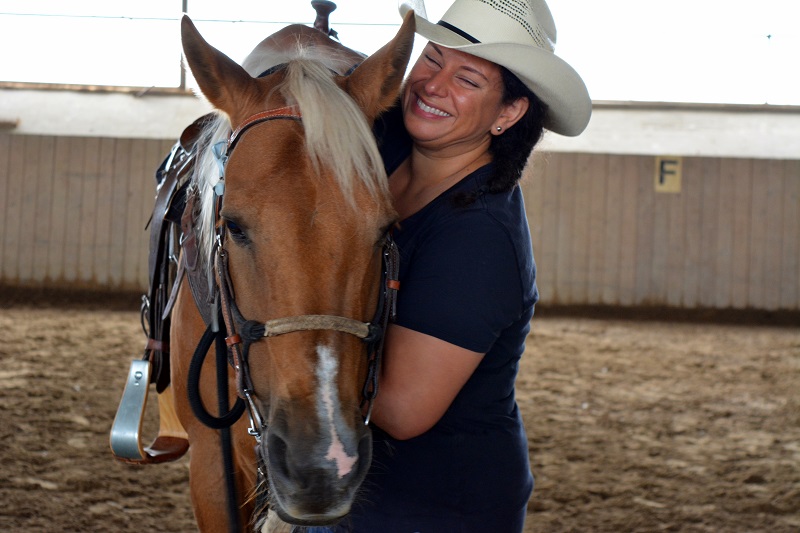
Capt. Monique Roumy of Toronto spends a few moments with Skip during her lesson in Stouffville, Ontario. Photo: Lindsay Chung
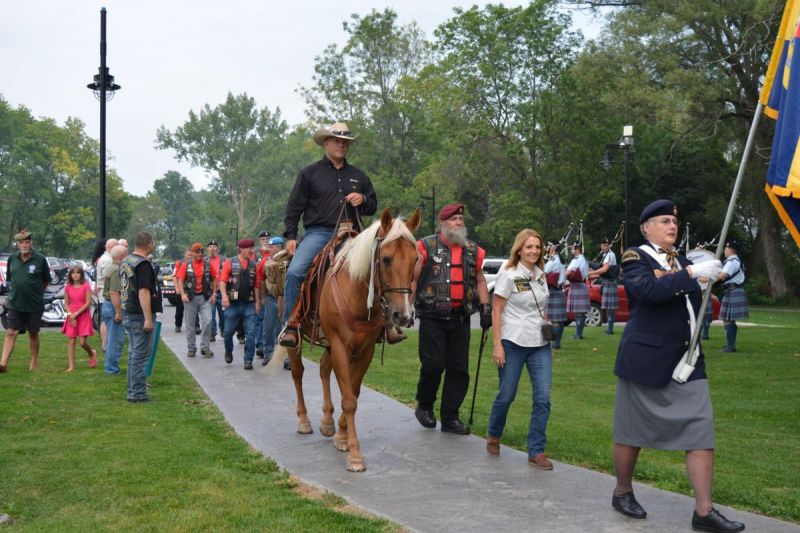
At CFB Trenton, Paul and Skip walk with P.M. “Trapper” Cane, a co-founder of Canadian Army Veterans (C.A.V.) Motorcycle Organization, and Darlene Cushman, a Silver Cross Mother whose son, Darryl Caswell, was killed in Afghanistan in a roadside bombing attack in 2007. Photo courtesy of Communities for Veterans Foundation
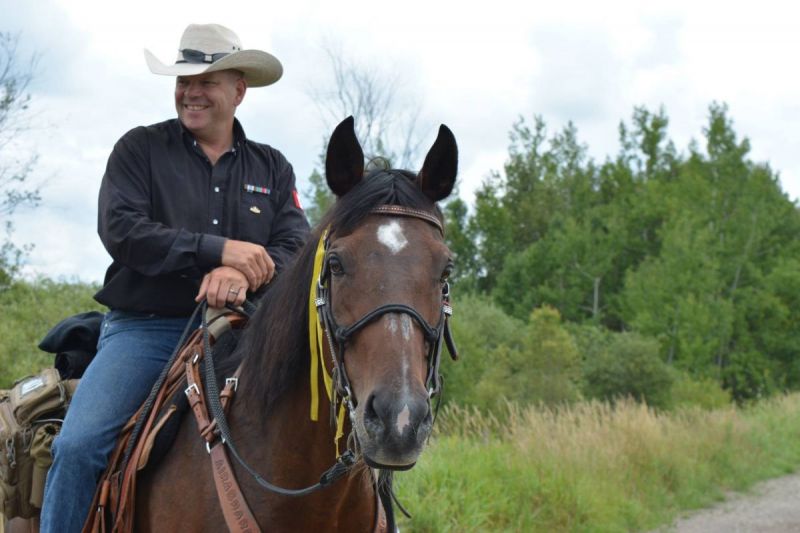
Paul Nichols and Zoe ride the Dufferin County CP Rail Trail on August 6, 2015. Zoe, an 18-year-old Trakehner mare, carried Paul about 5,000 of his 7,000-km ride across Canada. She was incredibly fit and still ready to go at the end of a 40 km day. Photo: Lindsay Chung, Communities for Veterans Foundation
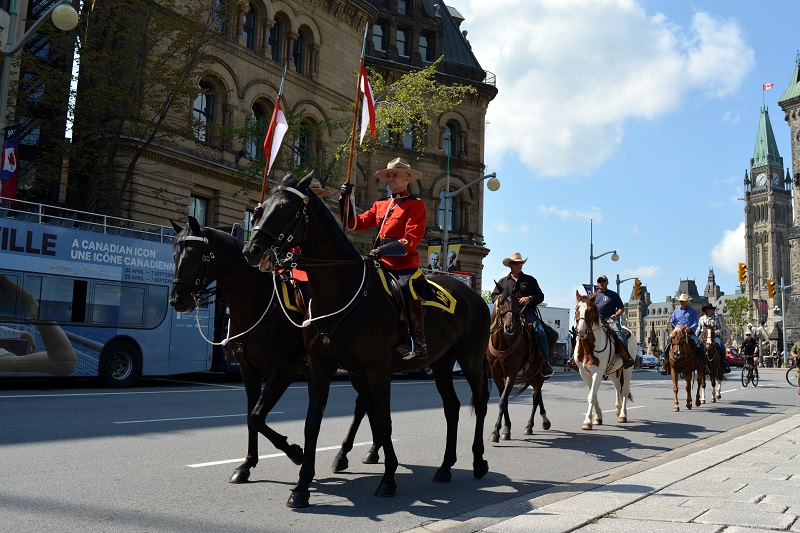
From left, Veterans Paul Nichols, Graham Ridley, Drummond Fraser and Rob Stratton, with the Peace Tower behind them, follow their RCMP escort through downtown Ottawa to the National War Memorial and the Tomb of the Unknown Soldier on August 30, 2015. Photo: Lindsay Chung, Communities for Veterans Foundation
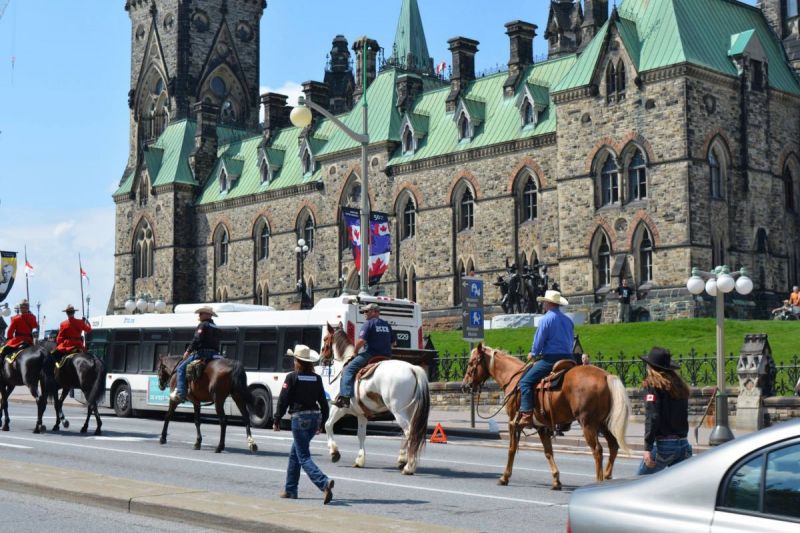
Paul Nichols, Graham Ridley, and Drummond Fraser ride by Parliament Hill in Ottawa, ON. Photo courtesy of Communities for Veterans Foundation
For the Nichols, the Ride and the experience of sharing it with veterans was overwhelming. They witnessed firsthand the power that horses had with the veterans. And they could see that power extend to people around them who may want to do this kind of therapeutic work. Seeing that impact has allowed Terry to explain the value of standards of care for the horse, and care for the veteran, for the best possible outcome.
She used a lot of natural horsemanship techniques to keep their horses connected and relaxed. The riders learned to read body language. People came to understand that if they were not in tune with the horse, the horse was not going to respond. Aggressiveness or over-reaction would not work. Through the response of a horse, people learned the need to let go of their own frustrations. That alone could be a life-changing moment. In that parallel world of working with the horse, veterans could see their relationship difficulties with people. A lightbulb moment happened when they could not only see the need for change, but also see their ability to effect a change in themselves. That realization becomes immensely powerful because they could see a light, like a candle, at the end of the tunnel.
“It’s been incredible. Something that happened that I’m really proud of is that I had a lot of opportunities to give horsemanship demonstrations and to share how the horses do the therapy component with veterans. We spoke at universities and colleges and elementary schools, and connected with community. That part of it was even more powerful than I ever imagined.”
Because of that commitment to visiting communities and taking the time to give talks and demonstrations, they were able to reach hundreds more veterans, their families, and their friends beyond those who were selected to ride with them.
With that outreach, something unique happened. A good friend of theirs had mentioned during the Ride that the experience was like they were lighting candles during the Ride Across Canada.
“One veteran, Sylvain, was really struggling, and he joined our crew as a mechanic to help out because he saw the power in what we were doing and wanted to make it easier for us. For him, it renewed his faith in humanity because he saw how people wanted to support veterans.”
As much as the Ride drew a focus on veterans, it changed and enriched the Nichols. When starting out, they were committed to making a difference, broadening awareness, making a positive change. But in order for that to happen they found out that they would have to open up themselves, be vulnerable, and share their own personal stories. In many ways it became a journey of healing for them, too. The Ride forced the Nichols to leave their comfort zones and stretch their personal boundaries bigger than they thought they could. It meant they had to take a huge leap of faith.

Paul, A.J. Baronet and Michel Gareau ride around La Citadelle de Québec, with Le Château Frontenac in the distance. Photo courtesy of Communities for Veterans Foundation
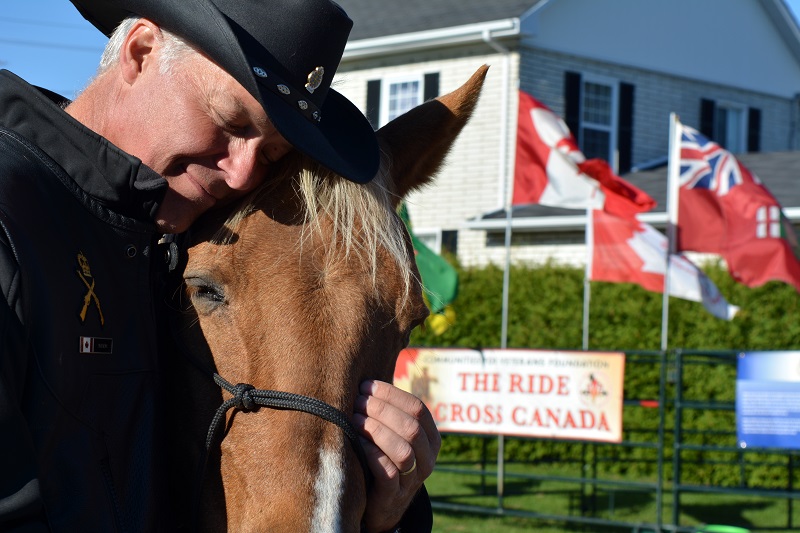
Veteran Sylvain Nadon of Victoriaville, QC, with Skip following their ride through Grand Falls, NB, served 25 years as a mechanic with the Génie Électrique et Mécanique (Royal Canadian Electrical and Mechanical Engineers). Photo: Lindsay Chung
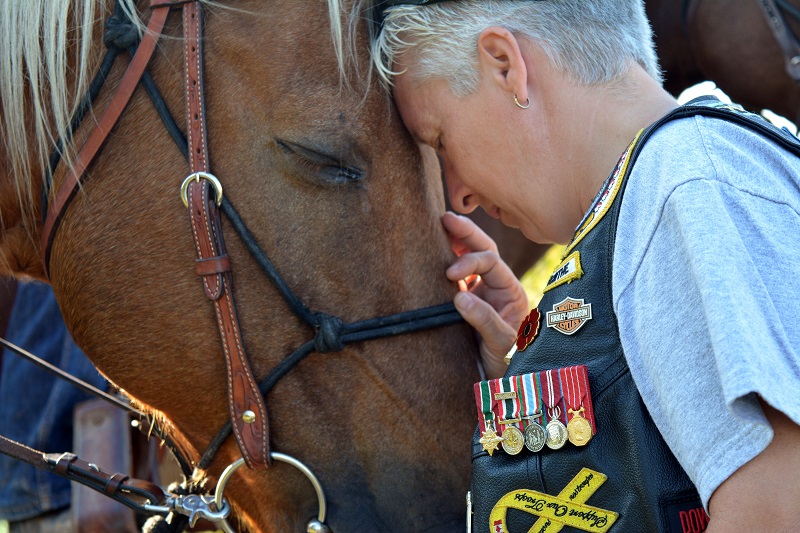
Veteran Sandra Morisette of Saint-Christophe-d'Arthabaska, QC, steals a quiet moment with Skip before her ride. Sandra served 20 years in the Army as a Communicator Research Operator and did five tours, including two to Alert, one to Haiti, one with HMS Northumberland, and one to Afghanistan. During her career, Sandra was posted to Gander and Ottawa. Photo: Lindsay Chung
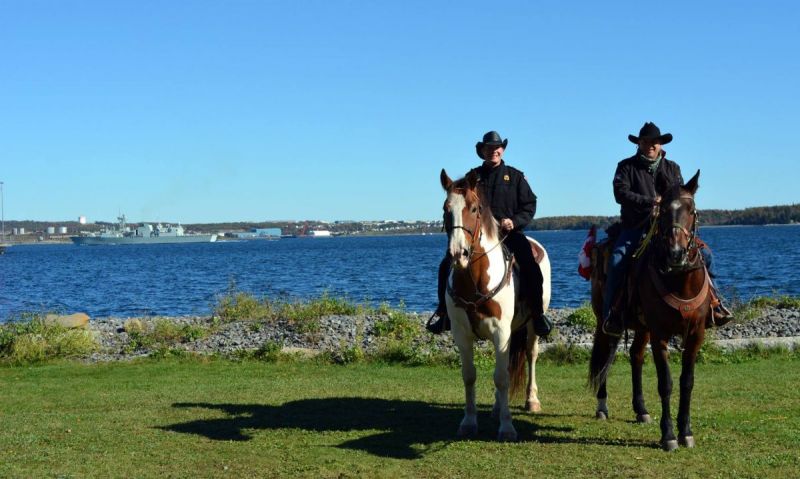
Royal Canadian Navy veteran Scott Peddle, who is still serving and has been serving for 34 years, and Paul ride at Point Pleasant Park, NS, as the HMCS St. Johns goes past. Photo courtesy of Communities for Veterans Foundation
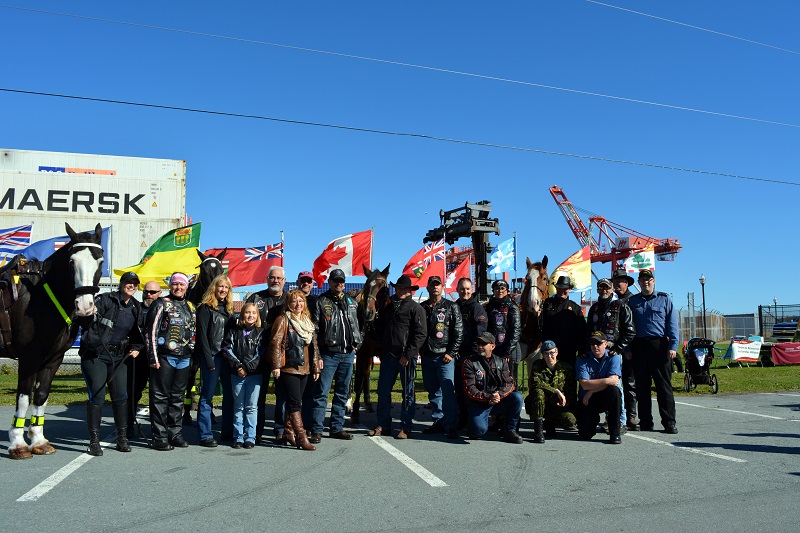
Riders and veterans at Halifax, Nova Scotia. Photo: Lindsay Chung, Communities for Veterans Foundation
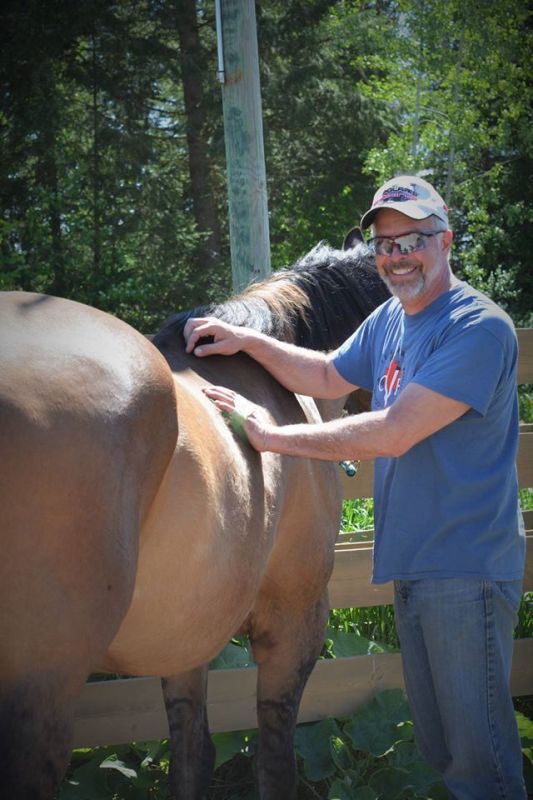
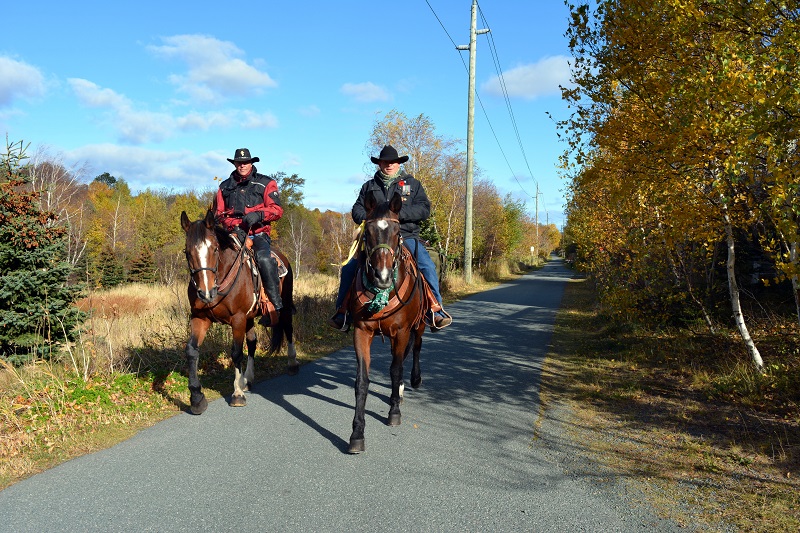
Sylvain Nadon (left) rides with Paul Nichols on a cool autumn day near the end of the ride. Photo: Lindsay Chung, Communities for Veterans Foundation
“Now that we have started something and lit those candles across Canada we have given so many people a taste of what horses have to offer,” says Terry. “We need to keep going. It will be our life work. Horses need their riders to be good leaders, sensitive and aware. When we are at that level for the horse, they feel content and it is effortless to ride. When we don’t have those pieces together, then we need to make the changes in ourselves.”
And that is where that connection is so important for veterans trying to cope with demons within. A horse’s response to their signals is a cue for change, opportunities to approach challenges differently.
The Ride was an extraordinary experience for Kirsten, the Nichols’ daughter, who was in charge of the horses throughout.
“It was incredible for her,” says Terry. “The changes that she will take with her into her own life will have such an impact. I know she had really high expectations in a job that she really wasn’t prepared for. She was 18 years old when she started the Ride, and it wasn’t possible for her to do it with the expectations that she had of herself. So she learned to be more patient with herself and, with that, she becomes more patient with the horses. She has seen results. She has more patience with problem solving. Then when she keeps her own emotions in check she becomes that horse trainer that she wants to be.”
The journey home took a month as they returned the leased horses to owners and enjoyed newfound friendships. But they felt a lingering restlessness to keep the candle burning.
“The Ride changed our lives,” says Terry. “The closer we got to the end, the more we felt it. When we got home we knew we had to continue what we started. We felt that we had lit fires all across Canada. We needed to tend to those fires and create something not only for veterans but for communities. We were hearing from people who now know how to communicate better with their counsellor or their psychologist after having experienced what they learned on the Ride.”
She says they believe there is a disconnect between contemporary veterans and Canadian communities. The perception of PTSD is that people who are suffering are weak. That’s not what they experienced with veterans on the Ride. They saw people who were fighting their demons, who wanted to be active and participate in their wellness. They wanted to find a way to fit into society, make their marriages work, contribute in civilian workplaces.
“But maybe some of the tools are lacking because the military and civilian cultures are so far apart in their understanding,” she says. “Bridging the gap is a solution.”
In spring 2016, they launched the Equine Assistance Mindfulness Program based at their farm in Quesnel, BC. Veterans immerse themselves in equine therapy for 13 days. The first program was held in May. Seven veterans came from across Canada and future programs will cater to up to ten individuals. In that first group of seven was Sylvain Nadon, the mechanic who joined the Ride in Quebec and stayed to the end.
“Terry called and said they were starting their first therapy session and would I like to come,” he recalls. “Yes! I need it. I was honestly, for the first time I will say, I was ready to pull the plug. I couldn’t deal with my life anymore. I was at the edge. Her call was right at the right time. So I jumped on my bike and drove 5,000 kilometres to the farm and spent two weeks there. Those two weeks saved my life.”
When Sylvain returned home from the Ride his PTSD was actually worse and he believes it was because the exposure to horses helped him recognize some of the triggers, but he still didn’t know how to deal with them all. Issues were coming to the surface and he knew he needed more time with Paul and Terry.
“Today, my war never ends because I’m still a soldier in my dreams,” he says guardedly. “It’s really hard. It keeps coming back. I’m still fighting, still shooting. I went to Syria and Israel. In Syria I was captured by Syrians. I was beaten and hit for a couple of days. When the war was starting I had to fight and shoot. People ask if I’ve ever killed someone. This is what you do. But it’s a very hard question because when you have a man in your sight and when you pull the trigger they are gone. Those guys are not coming back to see their kids. There’s not a single Christmas when I don’t think about them. I still can see their faces. It is part of the job that it was, but today we have to deal with that.”
Returning to Paul and Terry and the horses gave him one word: Hope.
“Being on the farm I had to deal with the horse and I had to take care of him. But through the horse I had to look at myself every day and deal with myself. I was able to do something with the horse and was able to deal with myself.”
Sylvain now has a horse of his own. Returning to Quebec, he knew he needed a horse to continue to work on himself. At first he leased “Yankie”, a 14-year-old bay Quarter Horse barrel racer, but very quickly he committed to buying him.
“The commitment was so strong. I needed that horse. He has the ‘tools’ I need to survive and get better. He’s about 30 kilometres from my home and I go to see him and take care of him every day. And he’s taking care of me. Paul said a horse can see through your mind and see through your eyes. It’s weird. But Yankie is doing such a great job for me looking through my mind. I believe in him. He gives me hope. I spend two to five hours a day with him. I want everything to be fun for him. When he enjoys it, it comes back to me.”
Sylvain knows now that he can make a difference. He is useful. He’s gaining a lot of self-esteem. And what matters is that his two grown children have their father back.
“Yankie is keeping their father alive,” he says with quiet emotion. “Without having met Paul and Terry, I wouldn’t be here. But now I have a purpose. I love riding my bike and I love being with Yankie.”
Having a purpose is at the heart and soul of the human condition.
“The Ride really focused on what was important,” Terry emphasizes. “We came home and Paul and I both quit our civilian jobs. We had taken leaves of absence for the Ride but we both left our jobs. We gave up all of our security to take this leap of faith even further. We couldn’t go back. We live on a fraction of what we ever have before and I think we are happier than we have ever been before. We know the minimum we need to pay our mortgage and keep the lights on, and our goal is to get this program going. We saw such a need and we saw the impact that we can make.”
The Equine Assistance Mindfulness Program was based on the lessons Terry had given as they crossed Canada. Since the government does not provide funding without an applicant’s proven track record, they are having their programs researched in order to maximize their chance for success. An important program component is Community Engagement, which enhances the opportunity for communities to be a support system. Also planned is a book (both print and digital) documenting the Ride and the stories of the veterans.
“One of the things our program does that is quite different from anything out there is community service,” she says. “When we run our equine program we have civilians involved. People bring their casseroles for dinner and we have different groups helping in the kitchen. They sit down at the meal with all the veterans, hear their stories, and get a glimpse into their military culture. They are just talking about work, but their work was in a war in Bosnia or elsewhere. Maybe the language is colourful or maybe they aren’t politically correct, but it doesn’t take long to see there are some really big hearts underneath. These are people with PTSD that are strong and motivated. Our community members share that with their families.”
She stressed that while it is so important to help the veterans, it’s just as important to change community perception. And she’s hopeful that the astonishing before and after effects she sees in the arena translate themselves into the research reports they need for funding applications.
“[Watching] my palomino gelding and the veteran he had been paired with, it looked like my horse was 100 years old, unmotivated, lazy. [But] the man he was carrying had spent five years living in his basement with the blinds closed and he had rarely gone out. He was so closed into himself that he didn’t have any sense of life or play or enthusiasm or focus or plan. Then I was doing some schooling with my horse and he saw him come to life with me. It clicked in his head that it wasn’t just the horse, it was the partnership. During that first week he was waiting on a lot of things, and felt quite uncomfortable as being around people was difficult for him. But being on the horse he realized he had to step it up, he had to be assertive, look where he was going. He had to be a leader. When he did that, magic happened. That person who was having so much difficulty phoned me from his home in Calgary and said he wants to come back and help with our next program in September. I said that sounds like it could work, but I have to figure out accommodation. He said “I’ll bring a tent. Where there’s a will there’s a way.” “Wow,” I said, “You have will!”
Throughout the amazing Ride, people wondered about the man, Paul, and his horse, Zoe. But the connection Paul has with Zoe goes beyond that of a horse and rider.
“She has a piece of my heart,” he writes on their website. “People ask about my horse and I say that she’s changed my life. Sometimes I say that she has saved it. Then they get a curious look and ask how. It’s true and so hard to sum up with words when it’s all feeling. I usually just tear up and say, ‘She’s a really good horse…’ The truth is I can’t answer that question with words. I can tell you about her scars and her dings and dents, but I never get much past this when I talk about her. How do you explain feeling your horse’s fear… her feeling yours… feeling bold and confident together… the trust. Her shoulder lifting under my leg and the slow sink in soft ground until her hooves hit the solid bottom that I know is there. How can you explain giving your horse her head and letting her feel her way across the muddy banks of a creek, and having her relax and refuse to move forward… ‘You’re right Zoe. We’ll find another way this time.’ How can you explain the feeling when the Elders look at me and say that this horse is special? The feeling when she is named a Spirit Horse and I’m told that she will keep me safe…”
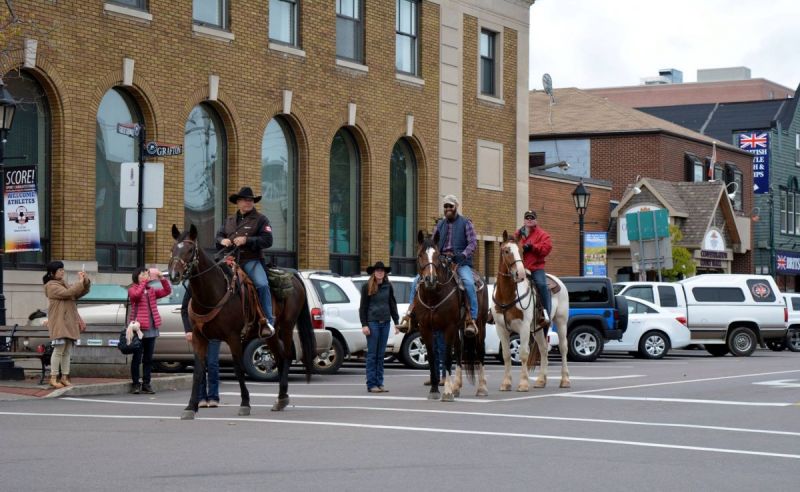
Paul, Justin Lord and Gene Dowling ride down Great George Street in downtown Charlottetown, PEI. Photo courtesy of Communities for Veterans Foundation

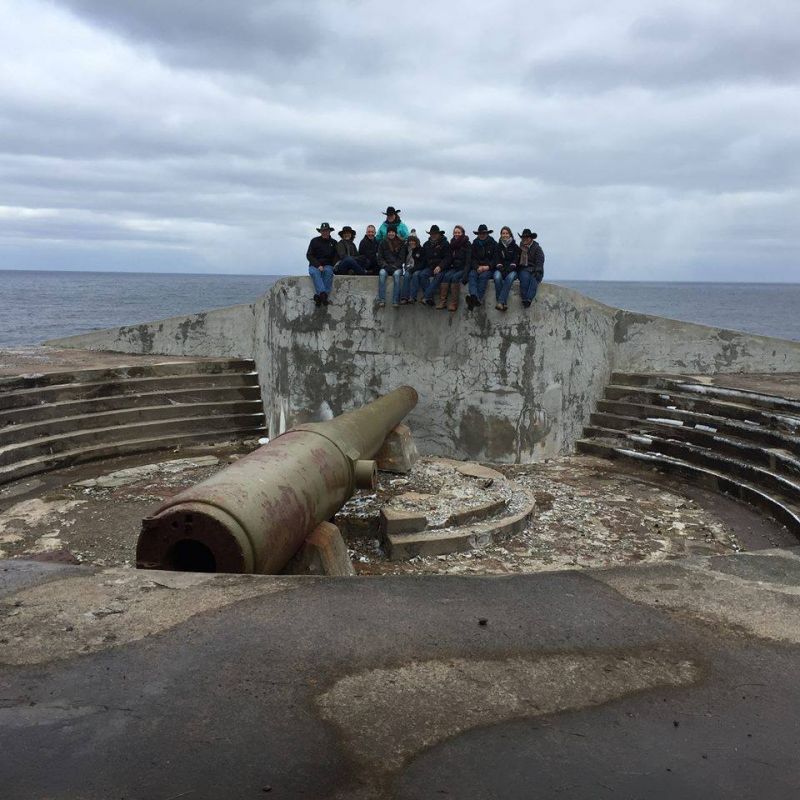
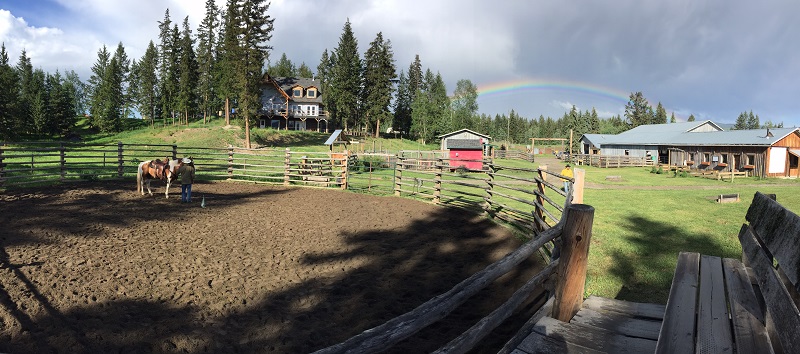
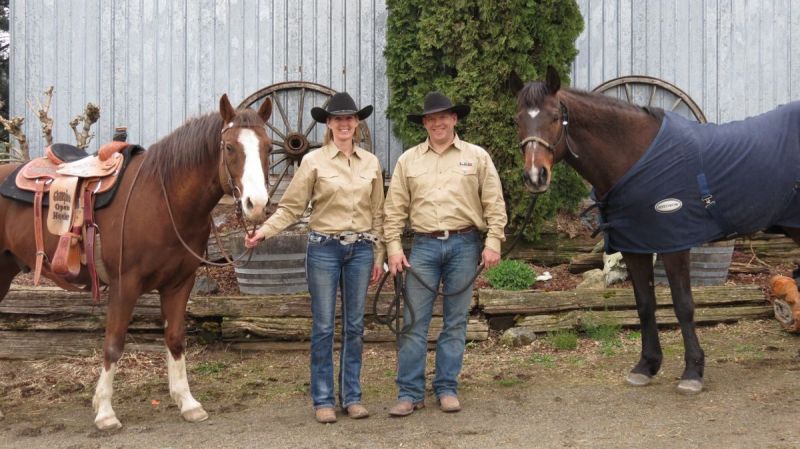
For Paul, that moment in the store shone a light on Canada’s veterans and soldiers who live quietly among us, their stories unknown, unheard. The Ride illuminated the power and purpose of those stories and the special eternal place we hold in our hearts for our soldiers.
For more information about their programs, updates for future activities, and fundraising needs visit www.communitiesforveterans.ca.
Main photo: Paul Nichols (front, left) has ridden all the way from Victoria, BC, finishing The Ride Across Canada after 211 days on November 9th, at the National War Memorial in St. John’s Newfoundland. Courtesy of Communities for Veterans Foundation



